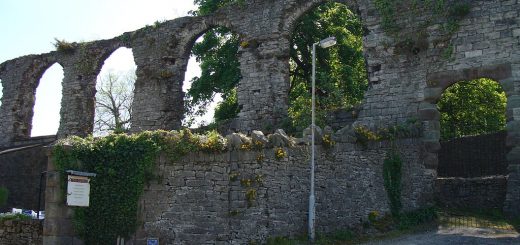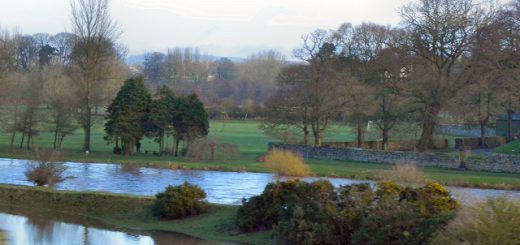The Great Bell of Burgh-le-Marsh
Like many people living along the coast in times past, the people of Burgh-le-Marsh once made a handsome living from ‘wrecking’. In stormy weather, if a ship was spotted in difficulty, the local folk would light a beacon on Marsh Hill, which the poor ship’s crew would mistake for the safety of a lighthouse, steering their vessel onto the treacherous sands. There, the sailors would all be drowned and the folk of Burgh-le-Marsh would wait for calmer weather before setting out to loot the broken body of the ship.
In 1629, a ship called the Mary Rose, from Leith in Scotland, was sailing along the Lincolnshire coast on its way to deliver a cargo of cloth to Flanders. The clouds grew black, the winds began to howl and soon the crew found themselves trapped in a deadly storm. The people of Burgh, watching eagerly from the shore, began to prepare the beacon. As they were nattering to each other excitedly about what they might have for their spoils, they were interrupted by the elderly sexton, Guymer, a pious man who begged the others not to light the beacon, and instead to consider the poor souls on board the ship. With sneers and cusses, they pushed Guymer aside and made their way to Marsh Hill to light the beacon.
Captain Frohock of the Mary Rose, seeing the light on Marsh Hill, gave a sigh of relief and ordered his crew to turn the ship towards the safety of what he assumed was a harbour. Back on land, sexton Guymer watched in horror as the ship steered towards the dangerous sands. Hobbling in his old age, he made his way to the church. Ascending the belfry as speedily as he could, he grabbed the bell rope and began to ring heave with all the strength he could muster. Captain Frohock, hearing the bell ringing furiously, quickly realised how close he was to the shore and ordered his crew to steer back out to sea, away from the sandbanks.
Seeing the Mary Rose turn away and out of their clutches, the townspeople furiously stormed their way to the church. Breaking down the belfry door, they found Guymer still clinging to the bell rope, his lifeless body swaying to and fro, dead from the exhausting effort of saving the ship.
Some years later, Captain Frohock returned to Burgh-le-Marsh to thank the townsfolk for sounding the bell and saving the ship and her crew. When, however, he discovered what had actually happened that night, he bought an acre of land, which became known as ‘Bell String Acre’, and ordered that the rent from this land be used to buy a silken rope for the bell.
Author: P A McHugh























Re: The Great Bell of Burgh-le-Marsh
One source suggests it is the Tenor Bell which the silk rope wa bought for. This bell is tolled between 11th October and March 21st at 6.00am and 8.00pm for curfew.